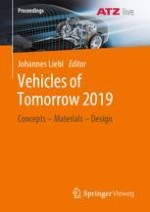2021 | Buch
Über dieses Buch
What type of sustainable concepts will meet future mobility requirements? Digitization is leading to the growth of the "sharing society". Especially in megacities, automation and the challenges to last mile logistics are likely to increase significantly.
The question is: How can we use active development methods to design clean, efficient and intelligent mobility solutions? The international congress "Vehicles of Tomorrow" is an information and communication platform that showcases all aspects of the mobility transformation.
Anzeige
